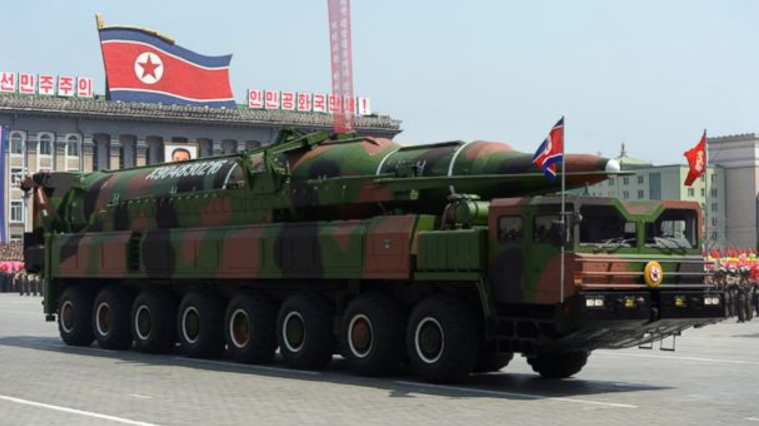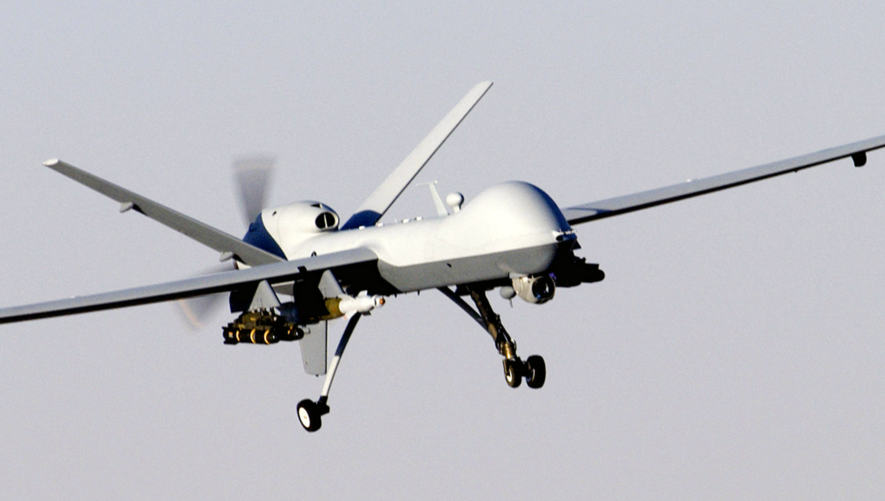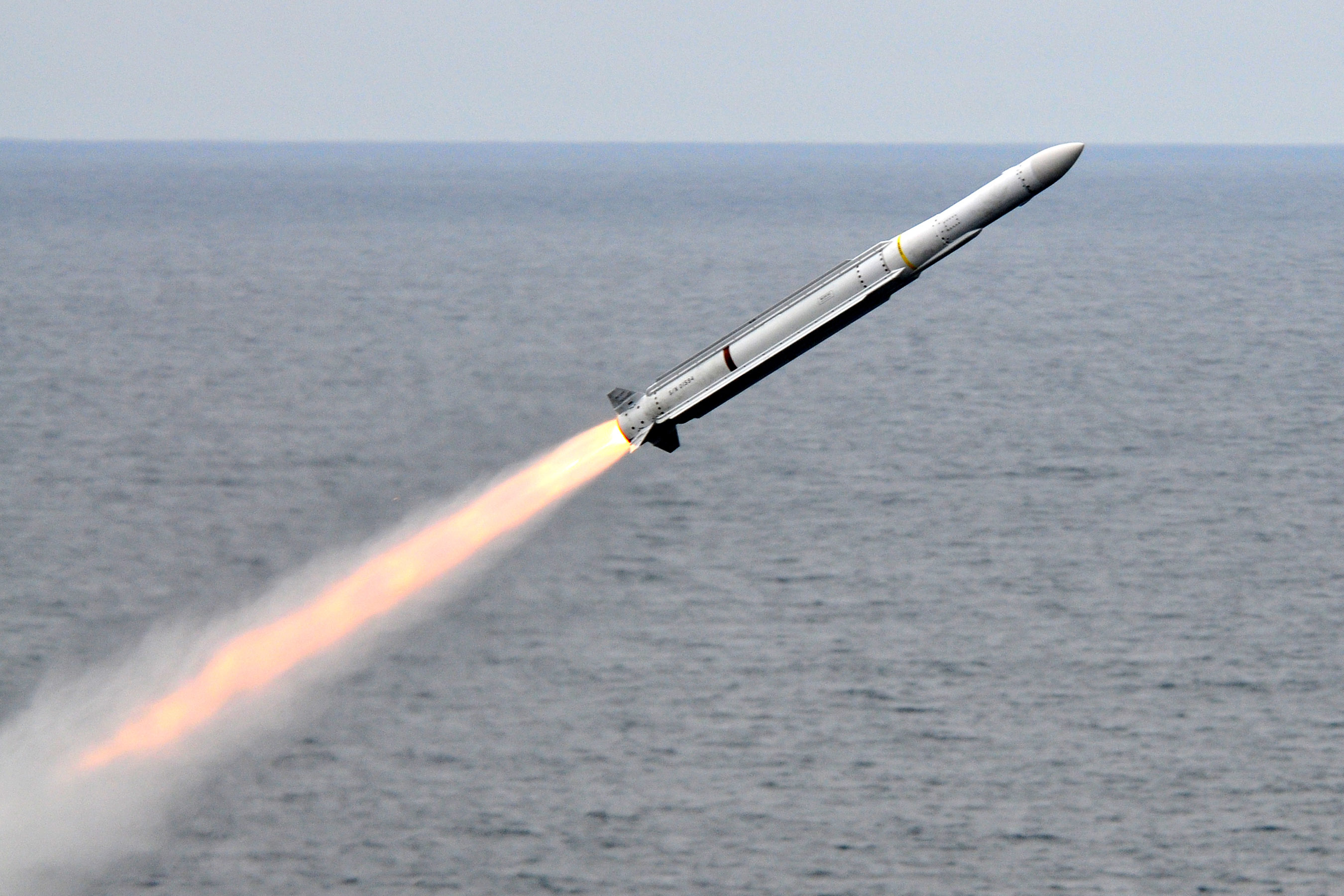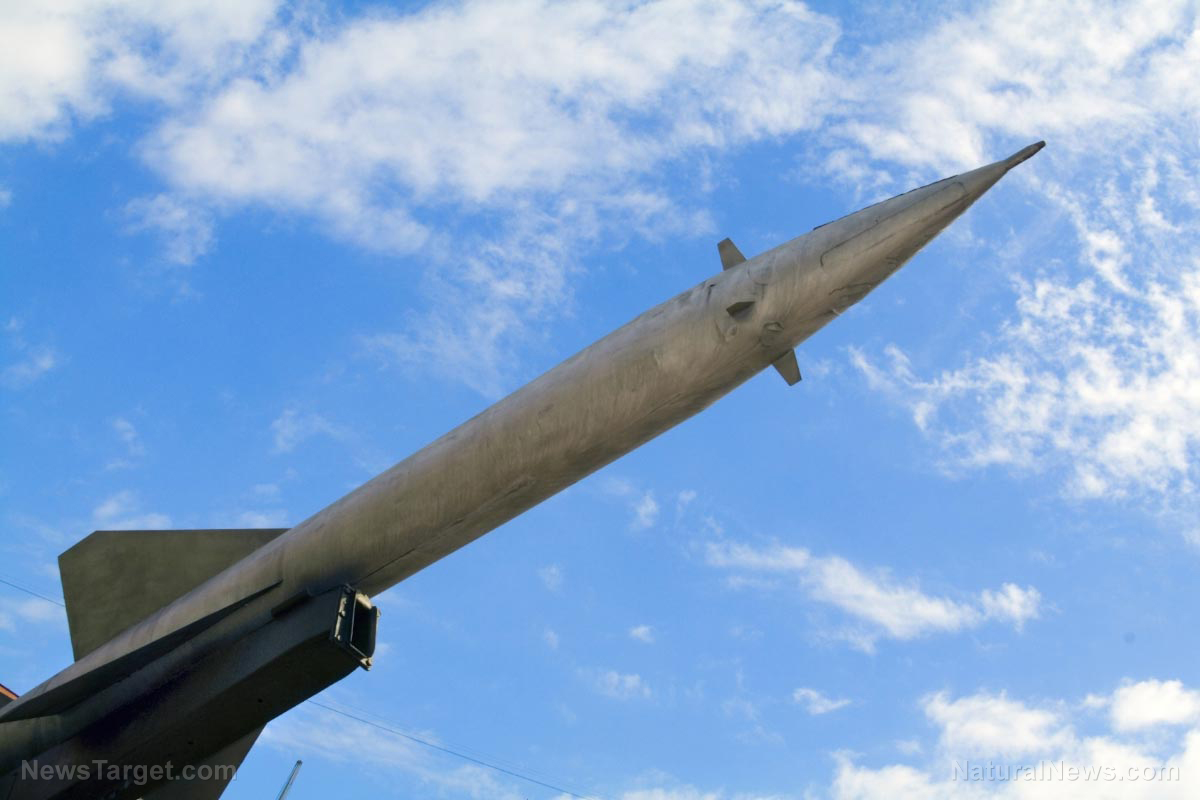
Satellite images showed mockups of at least one aircraft carrier and two other warships. The outlines of the other ships resemble the Arleigh Burke-class guided-missile destroyers.
The warship mockups were built at what appears to be a new missile target range complex in the Taklaman Desert in China's northwestern Xinjiang Autonomous Region. Intelligence from the United States suggests that before this new complex was created it was traditionally used for testing ballistic missiles.
The images were taken in October by Maxar Technologies, an American space company with 80 satellites in orbit.
The images show that, along with the three targets shaped like warships, the facility also has two rectangular-shaped targets that are a little under 250 feet in length mounted on six meter-wide rails. This rail system seems to extend through a large part of the complex.
According to AllSource Analysis, a geospatial intelligence company that helped identify the range complex for Maxar, the images show that the new facility is intended for multiple uses.
"The extensive detail of the mockups, including the placement of multiple sensors on and around the vessel targets [makes it] probably that this area is intended for multiple uses over time," wrote AllSource in its summary of an intelligence report.
China's anti-ship missile programs are overseen by a special branch of the People's Liberation Army – China's armed forces – known as the Rocket Force (PLARF).
Chinese Ministry of Foreign Affairs spokesman Wang Wenbin said at a press briefing that he was unaware of reports of the satellite images.
Asked about the mockups, Department of Defense spokesman John Kirby said the U.S. continues to be concerned by China's "increasingly coercive behavior" in the Indo-Pacific region.
https://twitter.com/disclosetv/status/1457408877188812800
Warship mockups built in preparation for war with US
This is not the first time that China has tested its ballistic missiles technology using aircraft carrier-shaped targets.
Since 2003, the PLARF has been launching missiles at a large concrete slab roughly the size of an aircraft carrier at the Shuangchengzi Missile Test Center in the Gobi Desert, near China's border with Mongolia.
The facility in the Taklamakan Desert is much more sophisticated, and the newer ship targets are closer approximations of the warships they are supposed to represent.
The new target range also shows that China is continuing to find a way to counter America's naval dominance by focusing on its anti-ship missile capabilities, with an emphasis on targeting U.S. navy warships.
This comes as tensions between Washington and Beijing remain high over issues relating to Taiwan and the South China Sea. (Related: Taiwan says it is preparing for war as China continues to provoke conflict with massive incursions of fighters, bombers.)
According to the Pentagon's latest annual report on the state of China's military, the PLARF conducted its first live-fire launch of missiles into the South China Sea in July 2020.
The PLARF fired six DF-21 medium-range ballistic missiles into waters north of the Spratly Islands. China is currently embroiled in a territorial dispute over the Spratly Islands with Taiwan and four other Southeast Asian nations.
According to the Pentagon, the DF-21 missiles – known as the "carrier killers" – have a range of around 1,870 kilometers (1,162 miles).
The Chinese are also starting to field longer-range anti-ship ballistic missiles, including the DF-26, an intermediate-range ballistic missile that was first unveiled to the public in 2016.
"The multi-role DF-26 is designed to rapidly swap conventional and nuclear warheads and is capable of conducting precision land-attack and anti-ship strikes in the Western Pacific, the Indian Ocean and the South China Sea from mainland China," wrote the Pentagon in its report. "In 2020, the PRC fired anti-ship ballistic missiles against a moving target in the South China Sea, but has not acknowledged doing so."
The DF-26 has an estimated range of 4,000 kilometers (2,485 miles). This means China can launch "precision strikes" on U.S. navy warships as far away as Guam.
Learn more about how China is preparing for war with the U.S. by reading the latest articles at WWIII.news.
Sources include:
Please contact us for more information.























